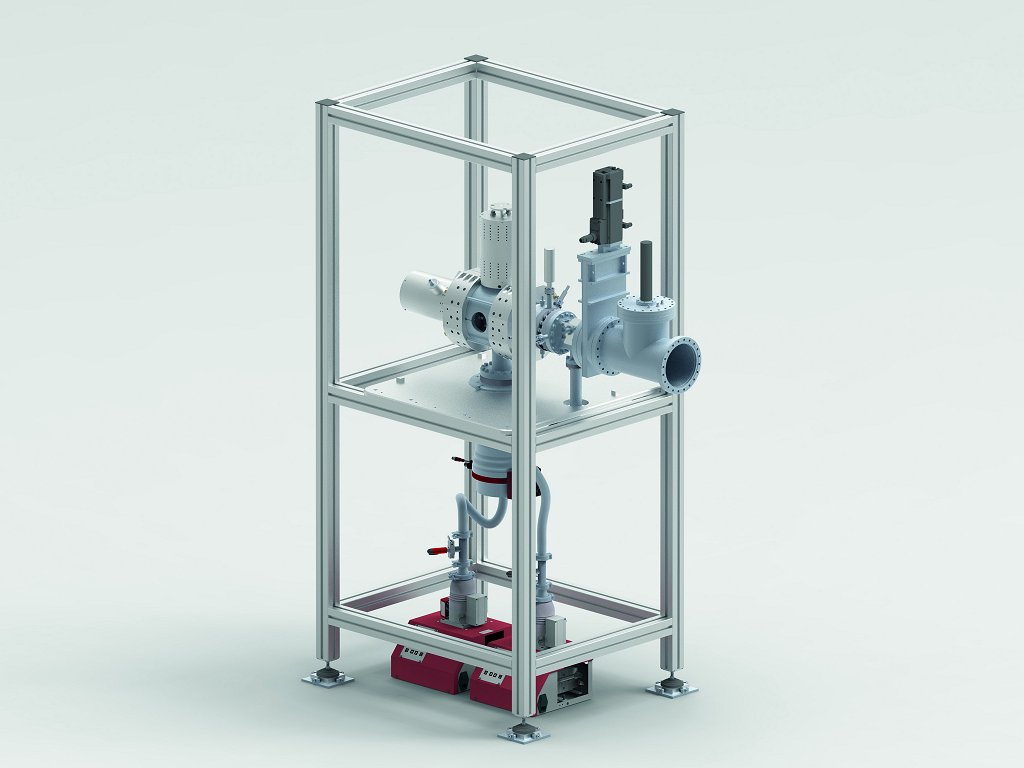Pfeiffer Vacuum awarded supply contract from TU Darmstadt for DREEBIT ion beam system
14.12.2020
• Laser spectroscopic measurement of atomic radii
• Dresden subsidiary DREEBIT GmbH to deliver required ion beam system
• Innovative vacuum apparatus
Pfeiffer Vacuum has been awarded a major contract from the Technical University of Darmstadt for the delivery of a DREEBIT ion beam system for use at the Technical University of Darmstadt’s Institute of Nuclear Physics. The Darmstadt researchers in the LaserSpHERe working group conduct precision experiments involving the interface of atomic, nuclear and particle physics. The research focuses on the laser spectroscopy of highly charged ions and exotic short-lived isotopes.
Construction of the “Collinear Apparatus for Laser Spectroscopy and Applied Physics” (COALA) large-scale research facility began at the end of 2014 at the TU Darmstadt’s Institute for Nuclear Physics, where the commissioned ion beam facility will be used. For the experiment, the EBIS-A type ion source used will generate electrically charged ions of light chemical elements which will be coupled into the beamline of the COALA apparatus. A clean ultra-high vacuum is essential to ensure the particles can move as freely as possible in the beamlines. An extremely powerful and reliable vacuum generator is necessary to maintain such a low pressure. This is even more so in the case of the new ion source since the ions remain in this for a much longer time.
Each element emits and absorbs the light of certain, very precisely defined wavelengths, which are perceived as a color by the human eye. This property is also the basis behind the appearance of colors in fireworks. The color depends on the chemical element and the state of charge of the atom. Very precise measurement of the wavelength not only provides information about the chemical element and its state of charge but it is even possible, through comparison with highly precise theoretical calculations, to determine the size of the atomic nucleus.
Prof. Dr. Wilfried Nörtershäuser, head of the working group at the TU Darmstadt, explains the technical advantages of the COALA beamline: “Up to now, spectroscopic measurement of atomic radii has only been carried out on hydrogen-like systems with a single electron, since the theory is only sufficiently accurate for this. Experimentally, however, these simple atomic systems have the disadvantage that the wavelengths to be used lie well into the ultraviolet range of the optical spectrum and are therefore difficult to access with today’s laser systems. Currently, however, there are promising efforts to achieve the required accuracy even for more complex helium-like systems with two electrons. Their wavelengths are much more accessible for laser systems and in the future will allow the radii of atomic nuclei from helium to nitrogen to be determined much more precisely than is currently possible. The COALA apparatus will provide the ideal conditions for this once the DREEBIT ion beam facility with the EBIS-A ion source has been installed.”
Since DREEBIT GmbH was founded in 2006, the “Ion Beam Technology” division has developed and brought to market various ion source types such as EBIS and ECRIS, which are principally used in particle accelerators for research and medical applications, such as ion beam therapy. Since 2017, DREEBIT GmbH has been part of the Pfeiffer Vacuum Group, focusing on the development of special systems and servicing of vacuum products. Some 70 people are currently employed at the Dresden and Großröhrsdorf locations.
The research project is supported by the German Research Foundation (DFG) within the Collaborative Research Center (SFB) 1245.
 Schematic overview of the Collinear Apparatus for Laser Spectroscopy and Applied Physics (COALA) beamline
Schematic overview of the Collinear Apparatus for Laser Spectroscopy and Applied Physics (COALA) beamline
 DREEBIT ion beam system for generating charged particles for the experiment
DREEBIT ion beam system for generating charged particles for the experiment













































